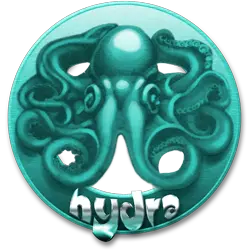
How to Ship and Sell Your Comic Book

You worked hard to write and draw your comic book. You edited the pages, printed the books, and now you’re ready to sell. But how do you get your comic into readers’ hands? You need a solid plan for distribution and order fulfillment.
These two parts of your business matter just as much as the art. Distribution means getting your comic book out to stores, online platforms, and fans. Fulfillment means packing and shipping the comic book when someone places an order.
Let’s break down both steps in a way that’s easy to follow.
Step 1: Choose How to Sell
You need to decide how you want to sell your comic book. Here are a few choices:
Sell in Person
You can sell your comic at comic cons, art fairs, and local events. You talk to readers, take payments, and hand them the comic right there. This is a great way to meet fans and build a following.
Sell Online
You can sell your comic on your own website, through Etsy, Gumroad, Shopify, or Big Cartel. These sites let you list your product, take orders, and track payments. Selling online lets you reach more readers, even outside your country.
Sell Through Comic Book Stores
Some local comic book shops support indie creators. You can walk in, introduce yourself, and ask if they take indie books on consignment. That means they sell your comic and take a small cut when one sells.
Sell Through Distributors
You can also work with companies that ship your comic for you. These include places like Indie Planet, GlobalComix, and others. Some print your book when people order (called “print-on-demand”). Others store copies and ship them for you.
Step 2: Print Enough Copies
Before you can sell and ship your comic, you need printed copies. You can choose two main types of printing:
Print-on-Demand
A print-on-demand company prints a copy each time someone orders it. This works best if you don’t have space to store books or money to print in bulk. It saves you time and money up front. The downside is a higher cost per copy.
Offset Printing
Offset printing makes sense if you want to print many copies at once—usually 250 or more. The price per book goes down when you order more. You will need to store the books and ship them yourself or use a fulfillment center.
Choose what fits your budget and storage space.
Step 3: Set Up Shipping
Now that you have copies ready, you need to ship them when people place orders. You can ship orders yourself or use a company that handles it for you.
Ship Orders Yourself
You can ship from home with just a few tools:
- A scale to weigh packages
- A printer to print labels
- Shipping materials like bubble mailers, tape, and backing boards
- Access to USPS, UPS, or another service
You can use shipping software like Pirate Ship or Stamps.com. These tools help you print labels, track orders, and pay for postage.
Pack your comic in a way that protects it from bends and water. Use a backing board and a polybag. Place it in a rigid mailer or bubble envelope. Always include a thank-you note or sticker. Small extras help fans feel special.
Use a Fulfillment Partner
If you sell many copies or don’t have time to ship, a fulfillment partner helps. These companies store your comic, pack orders, and ship them when someone buys. You send your inventory to them once, and they handle the rest.
Fulfillment partners charge fees, so check prices and compare. Some well-known options include White Squirrel, ShipBob, and Printful (if you also sell merch). These services let you grow your sales without shipping every order yourself.
Step 4: Track Orders and Inventory
Always know how many copies you have and how many orders you’ve filled. Keep a spreadsheet or use inventory software. If someone contacts you about a late or missing order, you’ll need this information to help them quickly.
Check your stock often. When your copies get low, reprint before you run out. It’s better to plan ahead than to keep fans waiting.
Step 5: Communicate With Buyers
Readers love updates. When someone buys your comic, send an email or message to thank them. Let them know when you plan to ship it and give them a tracking number if you have one.
If delays happen, keep buyers in the loop. Honest updates build trust. Most fans will understand as long as you keep them informed.
You can also ask readers for reviews or photos once they get your comic. These reviews can help other people decide to buy.
Step 6: Plan for Bigger Growth
As your fanbase grows, your process should grow too. You can:
- Offer pre-orders to see how many copies to print
- Add merch like stickers or prints
- Bundle issues together for deals
- Work with comic shops in other cities or countries
- Sell digital versions alongside print
Each of these steps helps you reach more readers and make more money.
You can also run a crowdfunding campaign (like Kickstarter) to raise money and print comics. Just remember: after your campaign ends, you will still need to fulfill those orders. Plan ahead so you don’t get overwhelmed.
Bonus Tips
- Always test your packaging. Mail one to yourself to see how it holds up.
- Keep shipping costs fair. Too-high costs might scare away readers.
- Save your receipts. You might need them for taxes or refunds.
- Use email newsletters. These keep fans updated and excited about your next book.
- Stay organized. A clear system helps you avoid mistakes and save time.
Denouement
Selling and shipping your comic book might sound like hard work, but you can do it. Start small. Learn as you go. Treat your readers with care and respect. Good service builds a fanbase that sticks around.
Your comic book is your dream. When you handle distribution and fulfillment the right way, your dream reaches more people. That’s the goal—sharing your stories with the world.










